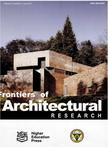Phenomenology of rhythm in design
Phenomenology of rhythm in design作者机构:Department of Architecture 482 College of Design Iowa State University Ames Iowa 50011 USA School of Urban Design Wuhan University 430072 China
出 版 物:《Frontiers of Architectural Research》 (建筑学研究前沿(英文版))
年 卷 期:2012年第1卷第3期
页 面:253-258页
核心收录:
学科分类:0303[法学-社会学] 1305[艺术学-设计学(可授艺术学、工学学位)] 0601[历史学-考古学] 12[管理学] 0202[经济学-应用经济学] 1204[管理学-公共管理] 08[工学] 0813[工学-建筑学] 0814[工学-土木工程] 0833[工学-城乡规划学] 0822[工学-轻工技术与工程]
基 金:Ronald E. McNair Post-baccalaureate Achievement Program
主 题:Rhythm Repetition Phenomenotogy Design cognition Design thinking
摘 要:Rhythm in design, as explored in this research, is proposed to be the result of cognitive performance generated stylistically by creators and recognized consciously by beholders. This study describes the phenomenon of rhythm; how it is created; the factors that comprise rhythm; the types of rhythms created by human cognition of repetition, and why repetition is recognized as a part of human cognition. Images of seven buildings designed by Alvar Aalto are used to demonstrate the creation and expression of rhythm in building compositions. Evidence gathered in this research explains that rhythm in design is a result of the design method consciously applied by human cognition of repetition. Rules of generating the phenomena of rhythm are also summarized. Designers could apply these rules to generate harmonious patterns through the effective usage of repetition. In sum, rhythm is ingrained in the human conscience and therefore should be a key component of design applied universally.



